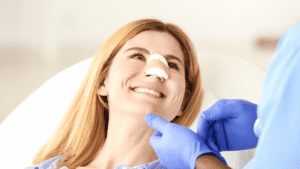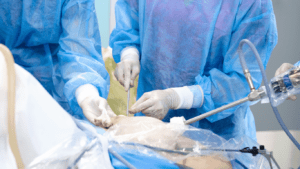Cervical Cancer Screening: 5 Frequently Asked Questions
Cervical cancer is a type of cancer caused by abnormal growth of cervical cells. One of the most common types of cancer among women worldwide, cervical cancer has a very high cure rate if detected and treated early. Screening tests help detect cervical cancer in its early stages, which allows the disease to be treated more successfully. In this blog post, we will discuss 5 frequently asked questions about cervical cancer screening in detail.
1. What is cervical cancer screening and why is it important?
Cervical cancer screening is a series of tests to detect abnormal changes in the cells of the cervix. These tests are designed to detect the early stages of cervical cancer. Early detection, when the cancer is still confined to the cervix, leads to more effective treatment and a higher cure rate. Screening tests can detect cancer while it is still in the cervix and prevent it from progressing.
Screening for cervical cancer is especially important for women between the ages of 25 and 65. It is recommended that women in this age range have regular screening tests, as this is when cervical cancer usually occurs. Early detection and treatment can halt the progression of the disease and even lead to a full recovery.
Screening tests can also detect abnormal cell changes in the cervix, known as precursor lesions or precancerous conditions. In these cases, the development of cancer can be prevented with appropriate treatment. Thus, cervical cancer screening not only helps with early detection, but also contributes to disease prevention.
2. Which screening tests are used?
There are two main tests for cervical cancer screening: Pap test (Papanicolaou test) and HPV test (Human Papilloma Virus test). These two tests can sometimes be used together and sometimes separately.
a) Pap Test: The Pap test involves examining a sample of cells from the cervix. During this test, a special brush or blunt-tipped instrument is used to take a sample of cells from the cervix. The cell samples are evaluated under a microscope to detect the presence of abnormal cells in the cervix. The Pap test can detect cellular changes that occur in the early stages of cervical cancer.
b) HPV Testing: Human Papilloma Virus (HPV) is one of the main factors causing cervical cancer. The HPV test detects the presence of HPV in a sample of cells from the cervix. HPV infection is an important risk factor for developing cervical cancer. HPV testing can identify which HPV types are present, which helps to determine the treatment and follow-up strategy.
In some cases, both tests can be used together. This makes the screening process more comprehensive and more sensitive. The Pap test detects cellular changes, while the HPV test determines the presence of viral infection. Using both tests together allows for a more accurate assessment of the risk of cervical cancer.
3. How often should I be screened for cervical cancer?
The recommended frequency for cervical cancer screening depends on age and risk factors. In general, the following recommendations apply:
- Women between the ages of 25 and 65 should have a Pap test every 3-5 years. This recommendation is based on the idea that regular screening can detect early stages of cervical cancer and provide appropriate treatment.
- Women between the ages of 30 and 65 should have a Pap test and HPV test every 5 years. This approach takes advantage of the benefits of both tests, making the screening process more comprehensive and sensitive. Detecting both cellular changes and viral infection allows for a more accurate assessment of cervical cancer risk.
- Women over 65 years of age can interrupt screening, provided that previous scans were normal and there are no risk factors. However, it is important to follow your doctor's advice.
However, in some cases, more frequent screening is recommended. Women with risk factors (e.g. HPV infection, smoking, conditions that weaken the immune system) should be screened more often. Women with abnormal test results or a previous history of cervical cancer may also require more frequent screening. You should discuss your risk status and frequency of screening with your doctor and act accordingly.
4. What do abnormal results in cervical cancer screening mean?
Abnormal Pap test or HPV test results indicate changes in the cells of the cervix. However, this does not always indicate cervical cancer. Abnormal results may indicate the following:
a) Preventable Cell Changes (Precancerous Lesions): These are conditions that can lead to the development of cervical cancer but are not yet cancerous. Terms such as low-grade cervical intraepithelial neoplasia (CIN 1) or low-grade squamous intraepithelial lesion (LSIL) describe such changes.
b) Precancerous Conditions: These conditions, called high-grade cervical intraepithelial neoplasia (CIN 2 or CIN 3) or high-grade squamous intraepithelial lesion (HSIL), are precancerous lesions with a higher risk of developing into cervical cancer.
c) Early Stages of Invasion: In some cases, abnormal results may indicate early stages of cervical cancer. This means that the cells have started to spread deeper than the cervical area.
Abnormal results usually require further testing and follow-up. Your doctor may recommend additional tests (colposcopy, biopsy, etc.) to assess your condition and determine the appropriate treatment plan. For mild abnormalities, regular follow-up and repeat scans may be performed. More serious abnormalities may require surgery or other treatments.
5. Is cervical cancer screening risky?
Cervical cancer screening is a minimal-risk procedure. During the Pap test and HPV test, cell samples are taken from the cervix. This procedure can often feel uncomfortable or slightly uncomfortable, but does not pose a serious risk.
During a Pap test, the cervix is gently touched with a special brush or blunt-tipped instrument and cell samples are taken. This may feel uncomfortable for a short time, but is usually not painful. In rare cases, there may be a slight risk of bleeding or infection, but these complications are usually mild and easily treatable.
Similarly, for the HPV test, cell samples are collected from the cervix. This test is also safe and has minimal risks. However, as both tests require touching the cervix, there may be some discomfort.
In some cases, additional tests or procedures may be needed after abnormal results. These may include procedures such as colposcopy (examining a magnified image of the cervix) or biopsy. These procedures may cause more discomfort, but your doctor will give you detailed information and take any necessary precautions.
In conclusion, cervical cancer screening plays a crucial role in saving women's lives. Regular screenings ensure early detection of the disease and appropriate treatment. Screening tests are minimal risk and the potential benefits greatly outweigh the risks. Talk to your doctor to learn more about cervical cancer screening and to determine your screening schedule. Early detection and treatment are vital to preventing and successfully treating cervical cancer.























